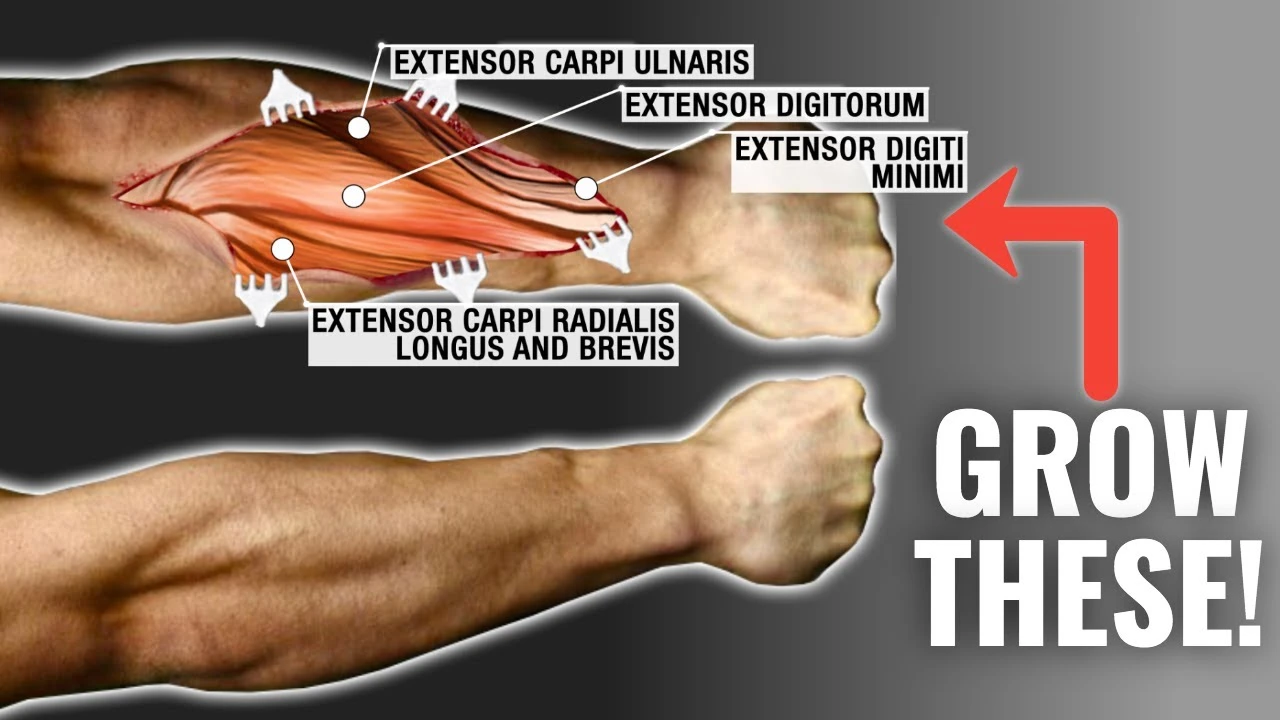Unveiling the Truth: Do Forearms Grow Fast?
Forearms, those often overlooked muscles, play a vital role in our daily lives. Whether it’s gripping a pen, lifting weights, or performing everyday tasks, strong forearms contribute to functional strength and overall upper body development. In this blog post, we will dive deep into the question that has been on the minds of many fitness enthusiasts: Do forearms grow fast? Let’s explore the various factors that influence forearm growth, the rate at which they can develop, and techniques to maximize their potential.
Read Also: Eczema Breakthrough: Revolutionary Treatment Unveiled of 2023
Factors Affecting Forearm Growth

Genetics:
Our genetic makeup has a significant impact on our physical attributes, including muscle growth potential. Some individuals naturally possess a genetic advantage when it comes to developing larger forearms. However, genetics should not discourage those with less favorable genetic predispositions, as training and nutrition play crucial roles in overcoming genetic limitations.
Exercise and Training:
- Types of exercises that target forearms: Forearm-specific exercises, such as wrist curls, reverse wrist curls, farmer’s walks, and grip strengthening exercises like deadlift holds, contribute to forearm growth. These exercises target the muscles in the forearms, promoting hypertrophy and strength development.
- Importance of progressive overload in forearm training: Similar to other muscle groups, forearms require progressive overload to stimulate growth. Gradually increasing the weight, volume, or intensity of your forearm exercises challenges the muscles, leading to adaptation and growth.
Read Also: Thick Thighs: Exclusive Explanation, PROs and CONs of 2023
Nutrition:
- Role of protein in muscle growth: Adequate protein intake is essential for muscle growth, including the forearms. Consuming high-quality protein sources, such as lean meats, fish, eggs, and plant-based protein options, helps provide the necessary building blocks for muscle repair and growth.
- Nutrients that support muscle development in forearms: In addition to protein, other nutrients like carbohydrates, healthy fats, vitamins (particularly vitamin D), and minerals (such as calcium and magnesium) support overall muscle development, including the forearms. A well-rounded and balanced diet is crucial for optimal forearm growth.
Rate of Forearm Growth
Understanding muscle hypertrophy:
Muscle growth, or hypertrophy, occurs when muscle fibers adapt to increased stress placed upon them. This process involves microscopic damage to muscle fibers during exercise, followed by repair and growth during rest and recovery.
Forearm-specific considerations:
- Size of forearm muscles compared to other muscle groups: Forearm muscles are relatively smaller compared to large muscle groups like the chest, back, or legs. Consequently, their potential for rapid growth may be somewhat limited. However, consistent training and proper techniques can still lead to noticeable improvements.
- Differences in growth rates between individuals: Just as genetic factors influence forearm development, the rate of forearm growth can vary from person to person. Some individuals may experience faster growth due to genetic factors, training intensity, nutrition, and other variables.
Techniques to Maximize Forearm Growth
Progressive Resistance Training:
To stimulate forearm growth, incorporating progressive resistance training is vital. Gradually increasing the weight, number of repetitions, or exercise difficulty challenges the forearms, promoting adaptation and growth.
Variety in Training:
- Incorporating different exercises and grips: Including a variety of forearm exercises and grips in your training routine helps target different angles and muscle fibers. Experiment with exercises like hammer curls, rope climbs, or using fat grips to increase muscle activation.
- Training frequency and rest periods: Finding the optimal balance between training frequency and rest periods is essential. Overtraining can hinder forearm growth, so ensure adequate rest and recovery between sessions.
Read Also: Double Nose Piercing: Elevating Your Style to New Heights in 2023
Recovery and Rest:
- The role of rest and recovery in muscle growth: Forearm muscles, like any other muscle group, require sufficient rest and recovery for growth and repair. Aim for 7-8 hours of quality sleep per night and incorporate rest days into your training routine.
- Avoiding overtraining and injury: Overtraining can impede forearm growth and increase the risk of injury. Listen to your body, allow ample recovery time, and prioritize proper form and technique to minimize the risk of overuse injuries.
Read Also: Building Powerful Forearms: Guide to Size and Strength in 7+ Way
Watch “Do Forearms Grow Fast?” on YouTube:
Conclusion:
Building impressive forearms is an achievable goal with consistent effort, proper training, and adequate nutrition. While genetic factors and the relatively smaller size of forearm muscles may influence the rate of growth, individuals can still make significant improvements by following effective training protocols and maintaining a balanced diet. Remember, the journey to strong, well-developed forearms requires patience, dedication, and a holistic approach to fitness. So, embrace the challenge, train smart, and watch your forearms thrive!





